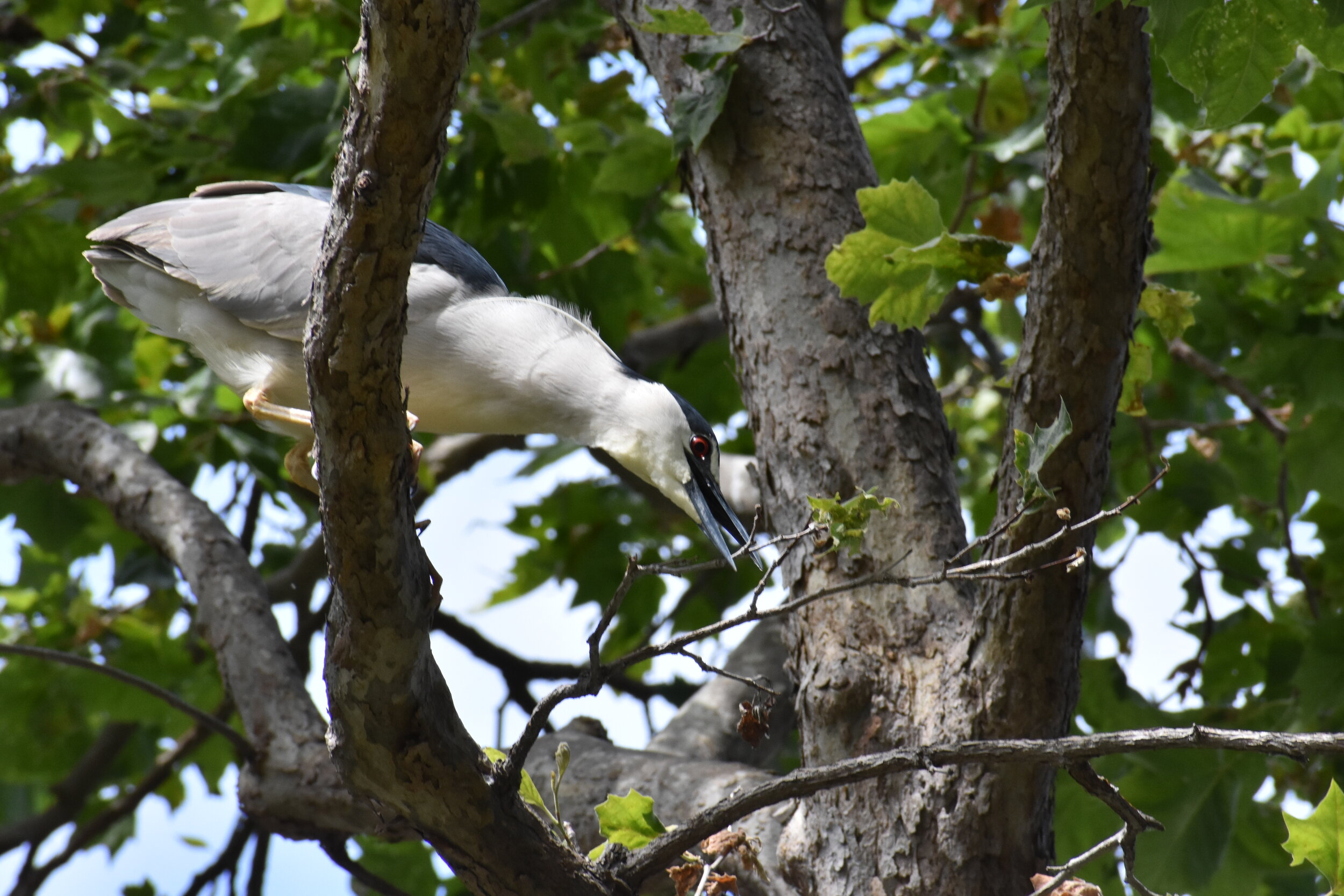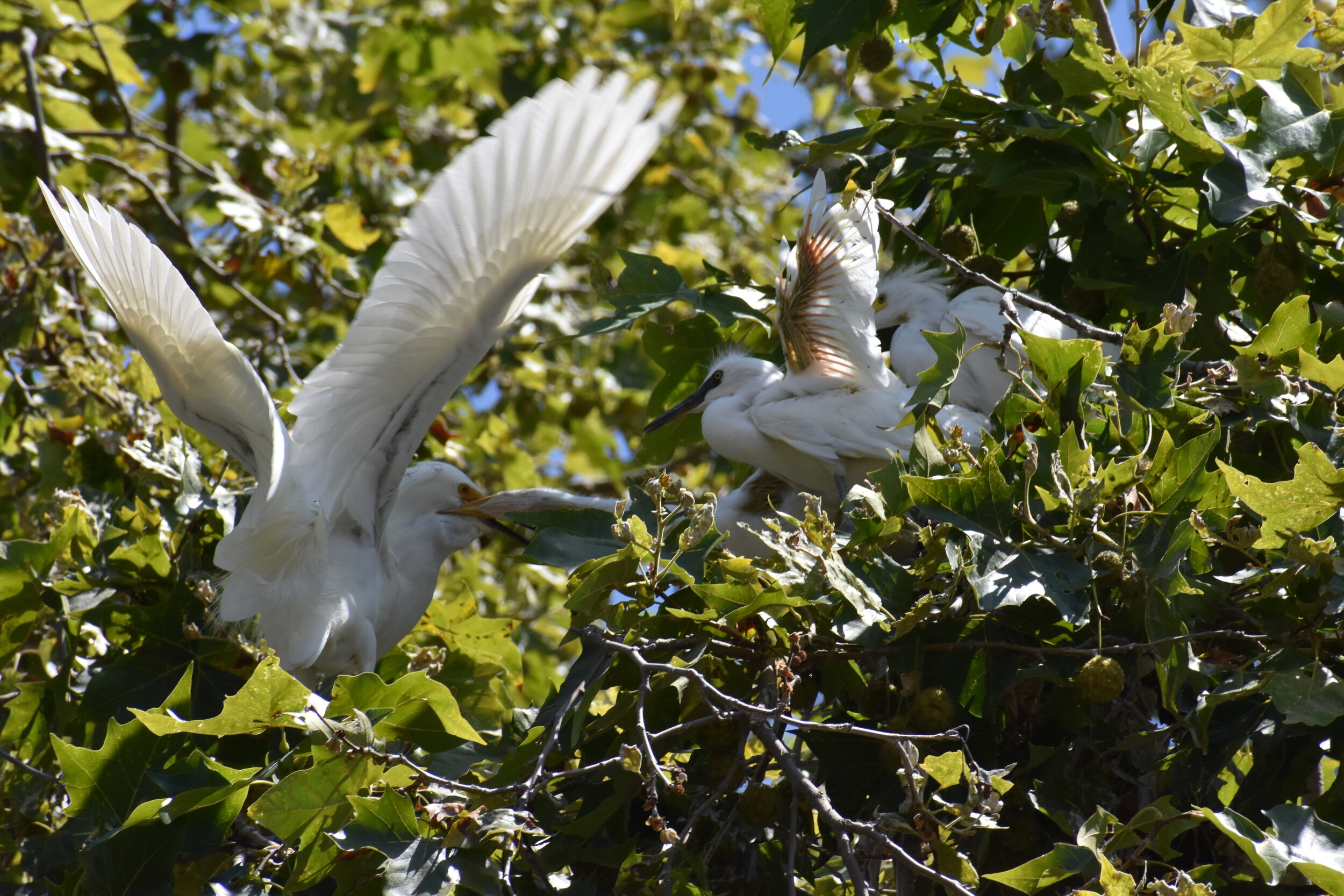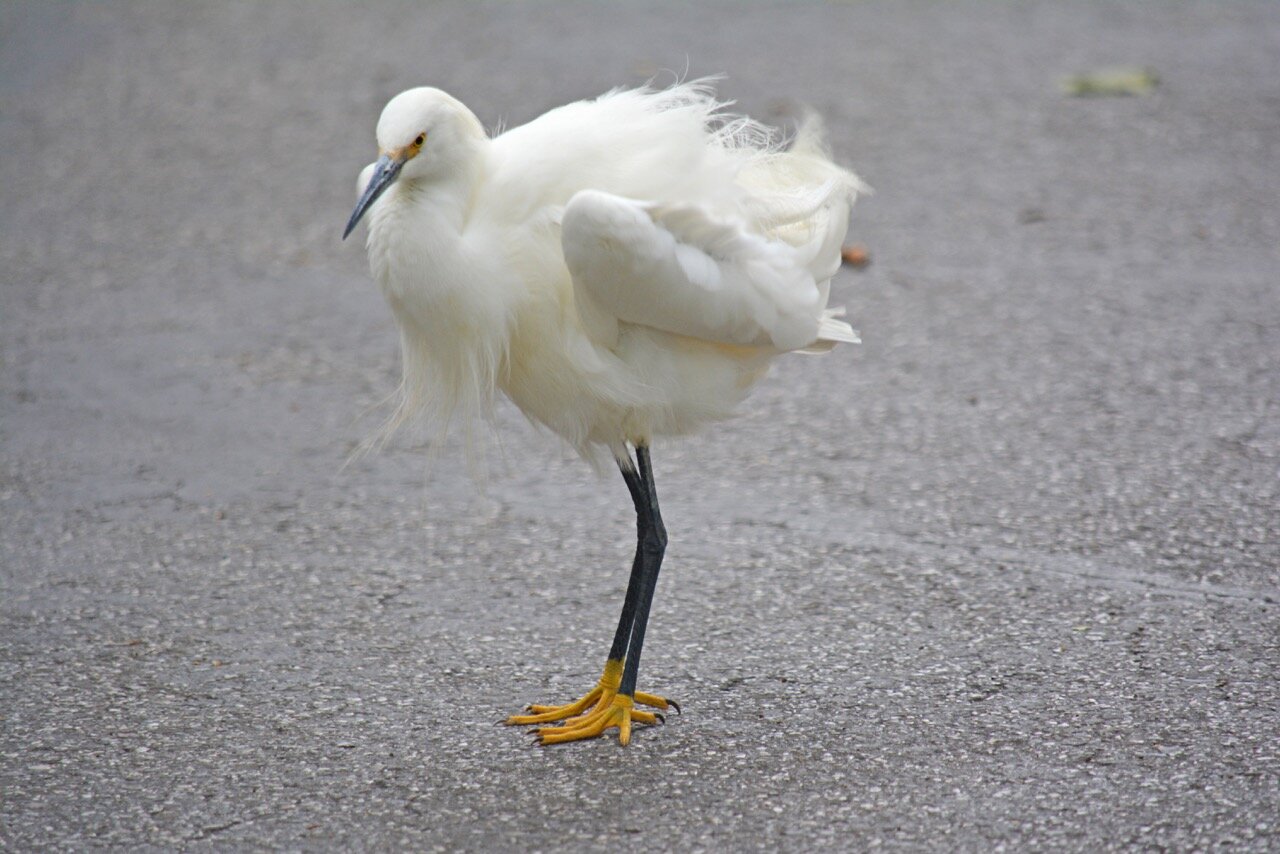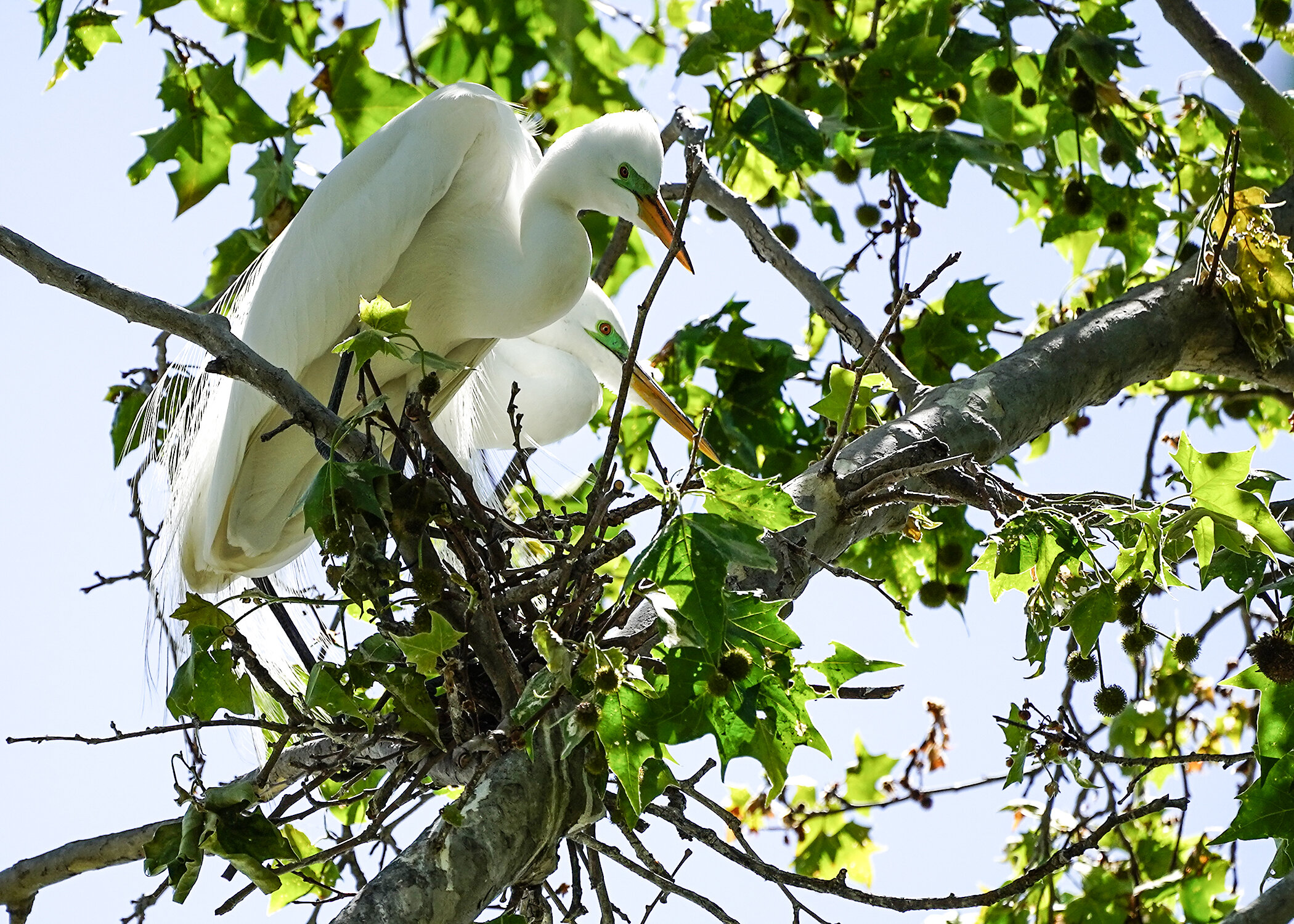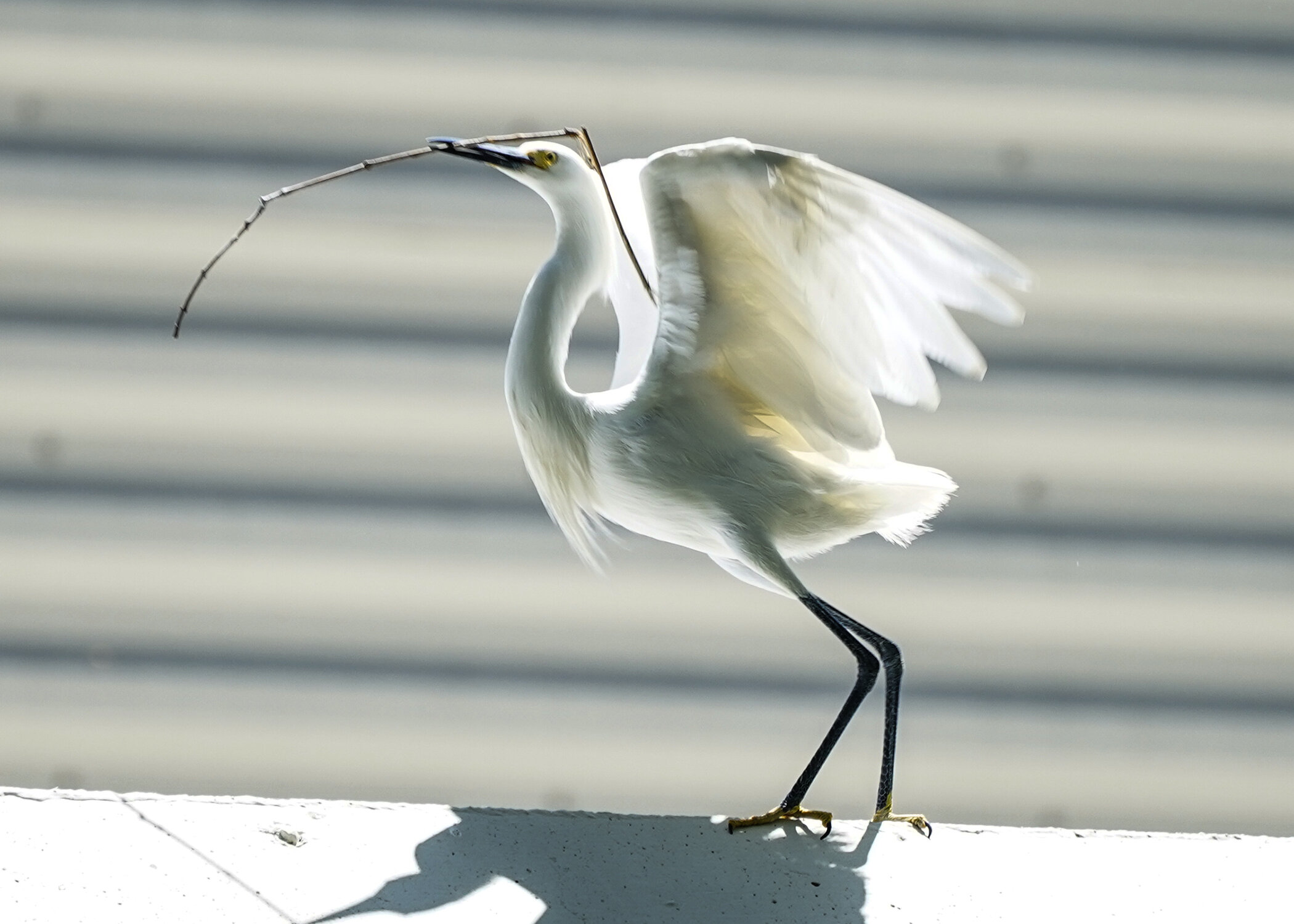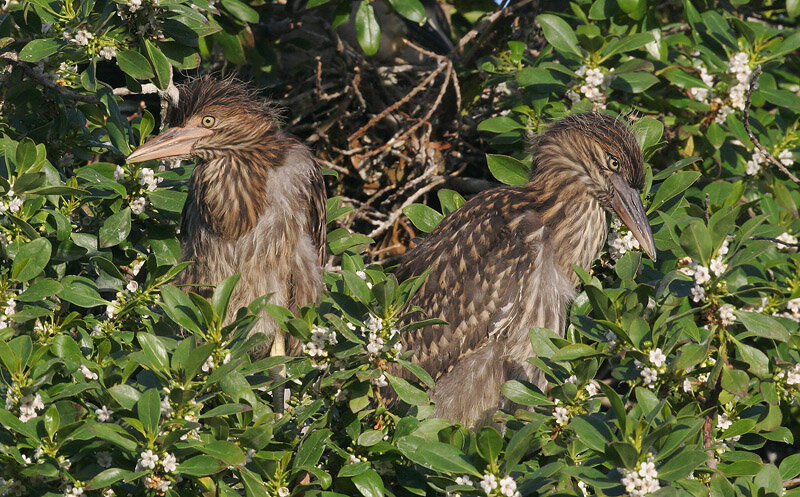Welcome to the Rookery
Great Egrets, Snowy Egrets, and Black-crowned Night Herons all call the Mountain View Google Campus home. Every year, they return in spring to raise their young in the noisy cacophony of the Shorebird Way colony (or rookery). Great Egrets usually arrive first, followed by the Snowy Egrets and Night-Herons. From March to August, you can watch the entire breeding cycle unfold before your eyes.
Historically, this area was dominated by wetlands and willow groves. It has changed over the years, but generations of birds still use the trees lining the street for their breeding colony allowing us to enjoy nature at its best right here on the Google Campus.
This rookery is regionally important, hosting 20% or more of the Great Egret colonies that are monitored in the Bay Area. Santa Clara Valley Audubon Society and other organizations help Google and the City of Mountain View steward the egrets at this site and others in the South Bay Area.
Egret Office Hours at the rookery are April 23, May 7, May 21, June 4 and June 18 11AM - 1PM.
How do you tell Great Egrets, Snowy Egrets, and Black-crowned Night-Herons apart?
Both Snowy and Great Egrets are white, but you can easily identify each egret species by their feet! Great Egrets have black feet while Snowy Egrets have yellow feet. The Great Egret is also taller – 3.3 ft vs. 2 ft for the Snowy Egret. During the breeding season the Great Egret's face turns bright green while the Snowy Egret's face turns red; they both grow long beautiful wispy plumes on their backs. Great egrets are regal. Snowy egrets are feisty and loud.
Black-crowned Night-Herons are another species making use of the rookery, making their first appearance in 2015. In contrast to the tall and vibrantly white Great Egrets, night-herons are short and squat with grayish-blue feathers, a black cap (or “crown”), and bright red eyes. Juvenile Night-Herons are brown with white streaks and orange eyes.
All three species are predators and will disperse throughout the South Bay Area once their nesting season is complete.
Great Egret
Great Egret with black feet. © Tom Grey
The elegant Great Egret is common in North America, and found throughout South America, Africa, and parts of Asia. It is a tall all-white heron with an impressive 5 ft wingspan. Males and females look alike and juveniles look like non-breeding adults. They fly slowly with their neck tucked back into a tight s-curve. The birds hunt by standing immobile or wading through wetlands to capture fish and many other marine animals with a deadly jab of their sharp bill. Great Egrets also hunt rodents and large insects in open fields, undulating their long necks as they stalk their prey.
Snowy Egret
Snowy Egret with yellow feet. © Tom Grey
The feisty Snowy Egret is a smaller all-white heron with a wingspan just over 3 ft. They range over most of the United States and into most of South America. Males and females look alike and juveniles look like non-breeding adults. They hunt for fish, crustaceans, insects and small reptiles in shallow water, often running through the water and stamping their feet. They also fly slowly with their neck tucked back into a tight s-curve. Snowy Egrets sometimes mate with other heron species to produce hybrids.
Black-crowned Night Heron
Adult Black-crowned Night Heron. © Tom Grey
Black-crowned Night Herons can be found across South America and parts of North America year-round, including California’s coast. Belonging to the same family as Great Egrets and Snowy Egrets, these birds frequently nest alongside related species. They hunt mostly at night and typically spend their days perched quietly on tree limbs, discreetly hidden by the foliage. Unlike the egrets, these birds are marked with black backs and crowns for which they’re named, making them stand out in the Mountain View Rookery.
What are they eating?
Herons and egrets are carnivores. While you’ll typically see these birds near bodies of waters, along the Bay, or in our creeks, we can also find them hunting in the fields and hills amongst the grass. Whether it’s a fish, frog, lizard, or mouse, if it moves, these birds will try to snap it up! While hunting methods do vary between species, all of the rookery inhabitants will use their dagger-shaped beaks and long necks to spear their prey. The babies eat more of the same, and we occasionally find the evidence of picky eaters on the street beneath the rookery, with half eaten fishes decorating the side walks and even some unlucky windshields.
Breeding Season
The breeding season for these birds lasts from April to September. They nest in colonies in the tops of trees or shrubs often alongside other species. Both males and females participate in the incubation and care of chicks until they permanently leave the nest. Breeding starts with elaborate courtship displays by the male. The male also builds or renovates a large platform nest of sticks lined with twigs and grasses. The female then lays several light-blue eggs that are incubated for about 25 days. After hatching the chicks leave the nest in about 23 days and move about on nearby branches before fledging. Young chicks are aggressive towards one another in the nest, and stronger siblings often push their weaker kin out of the nest. Parents do not care for egrets that fall out of the nest (but our colleagues at the Peninsula Humane Society do!).
Snowy Egret during breeding season. © Tom Grey
Great Egrets during breeding season. © Tom Grey
What are crows doing here?
Crows spend time near the colony hoping to grab an unattended egg or nestling. This is a natural occurrence, and a part of why the egrets and herons nest communally.
Conservation
Both Snowy and Great Egrets were hunted nearly to extinction for their breeding plumes in the late nineteenth century. These beautiful feathers were used commercially to decorate women's hats and clothes. The decimation of the egret population inspired conservation movements and some of the first laws to protect birds in the United States. The Audubon Society grew out of this conservation movement in 1886 when a group of concerned bird-watchers made a stand against this use of feathers. Now the International Migratory Bird Treaty Act protects migratory birds in the United States with similar acts in Canada, Mexico and other countries.
Snowy Egret adult feeding young. © Tom Grey
Juvenile Black-crowned Night Heron. © Tom Grey
Great Egret adult feeding young. © Tom Grey
What is Google doing to help?
To protect the birds and people who like to watch them from the road, Google and the City of Mountain View close Shorebird Way to traffic after the egret chicks hatch. In addition, Google implements bird-safe rodent control methods (without poisons) and educates employees about the egrets and herons, as well as other natural treasures found on campus. Google also sponsors local groups that monitor the egret colony and provide information to the public, as well as groups that collect, transport and care for young egrets and herons that fall out of nests. Beyond these more direct efforts, you’ll notice the green spaces surrounding the rookery on the Mountain View campus are filled with native plants, providing a haven for our pollinators, insects and even our local lizards, whose presence helps support birds beyond the egrets, and other taxa beyond.
Birds in Distress
Please do not approach egrets on the ground. If you find a nestling on the ground or an injured bird, DO NOT PICK IT UP. Contact Google Security, file a GUTS ticket or contact Silicon Valley Animal Control Authority (SVACA) about injured or very young birds with almost no feathers (408) 764-0344 during work hours or (408) 866-2101 after hours.
Volunteer Opportunities
Santa Clara Valley Audubon Society (SCVAS) has many opportunities for monitoring and stewarding this egret colony and for other local conservation and environmental education efforts. Please contact advocate@scvas.org if you want to help.
Donate to Help Birds in the Bay Area
Santa Clara Valley Audubon Society (SCVAS) relies on donations from hundreds of individuals like you to support our many education and conservation efforts in our Bay Area. Each dollar that you donate joins with the dollars of your neighbors to improve your quality of life in Santa Clara County. SCVAS is a 501(c)(3) non-profit organization, making all donations tax-deductible.



